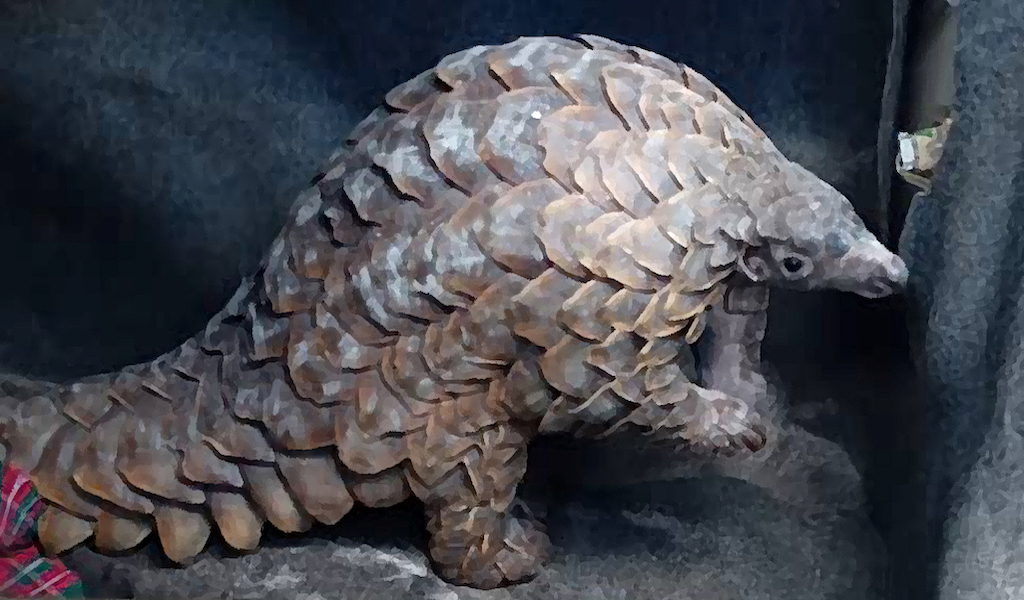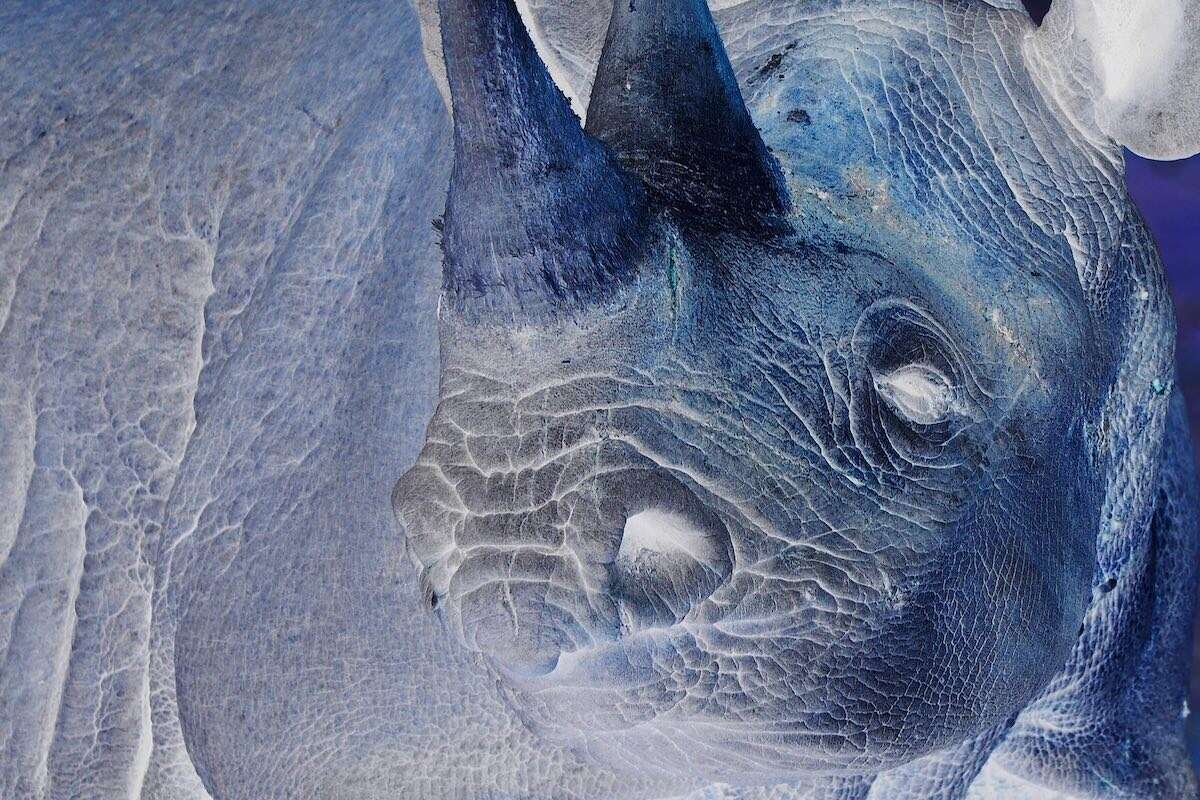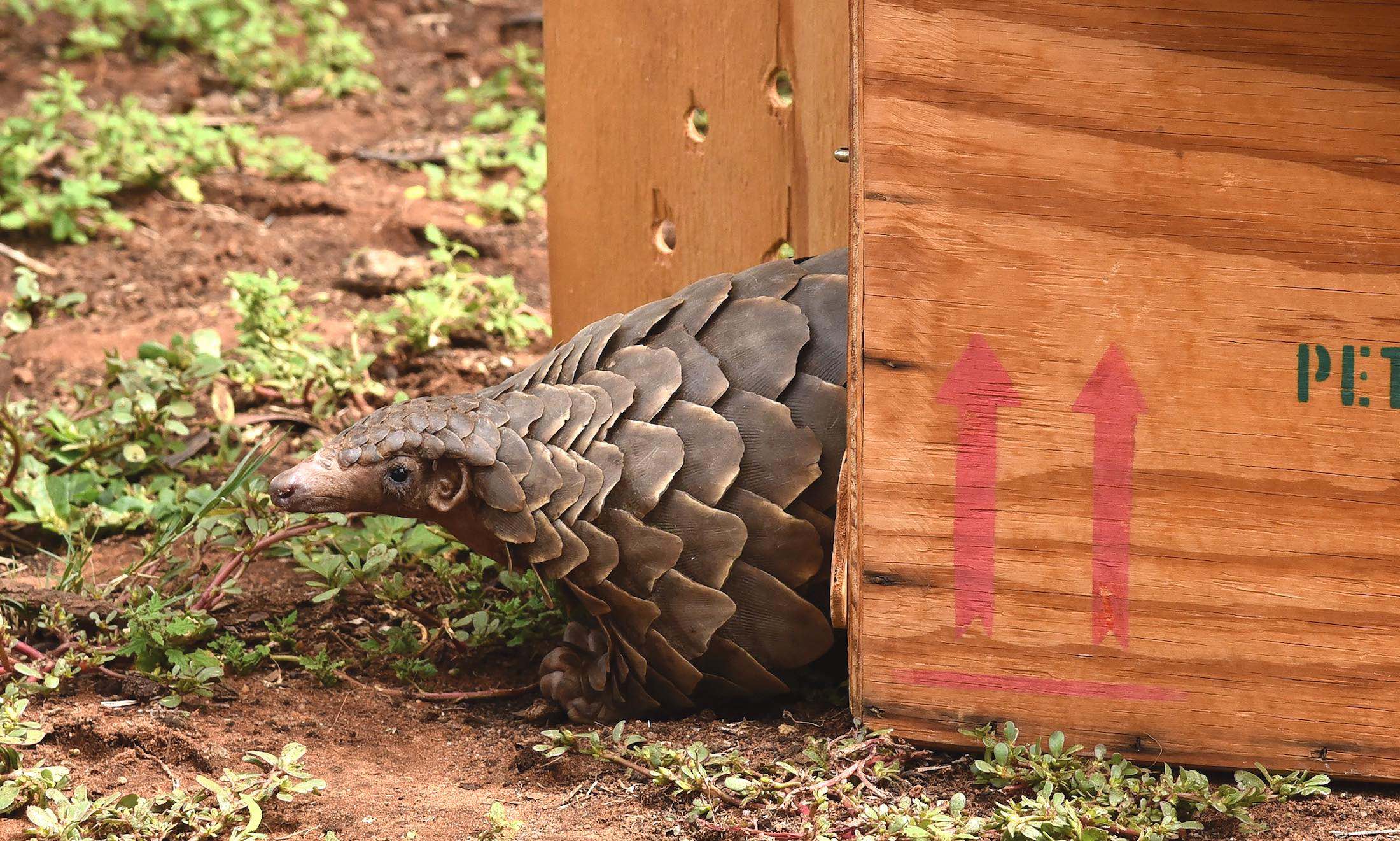
What is being done to fight wildlife crime in Namibia?
By Helge Denker
8th August 2020
Namibia has experienced a severe surge in wildlife crime over the past decade. Although criminals will traffic anything that makes money, there are currently three main high-value targets: elephants for their ivory, rhinos for their horns and pangolins for their scales and flesh.
The public is broadly aware of the poaching problem
and a sense of urgency to do something about it has led to tremendous support. Yet the complexity of wildlife crime is poorly understood, creating a sense of frustration that not enough is being done. Namibia’s conservation entities, law enforcement agencies and judiciary are doing a lot. Crime fighting requires a high degree of secrecy to be effective, and so not everything can be made public. But many initiatives and successes can be shared.
Wildlife crime involves all sectors of society. Rural people living in poverty may see this as a way out, yet are usually the ones who bear the highest risk yet receive the lowest reward for their involvement in wildlife crime. Poachers risk getting attacked by wild animals, or caught in armed confrontations with law enforcement personnel. Poachers make up the biggest segment amongst arrested suspects of wildlife crime. Dealers and fixers (mostly influential urbanites), who enable contraband to be trafficked out of the country to international markets, are less often caught and thus carry less risk, yet make the most money.
In Namibia during 2019, an average of 1.2 wildlife crime cases was registered per day. Of these, 174 involved high-value species. The pangolin has become the most targeted species – 123 were seized during 2019 (49 of which were alive and most could be rehabilitated and released). Of 160 suspects arrested on charges related to pangolin in 2019, 21 (13%) were convicted during the year. The remainder are in custody awaiting trial (66%), out on bail (12%) or currently have an indeterminate status.
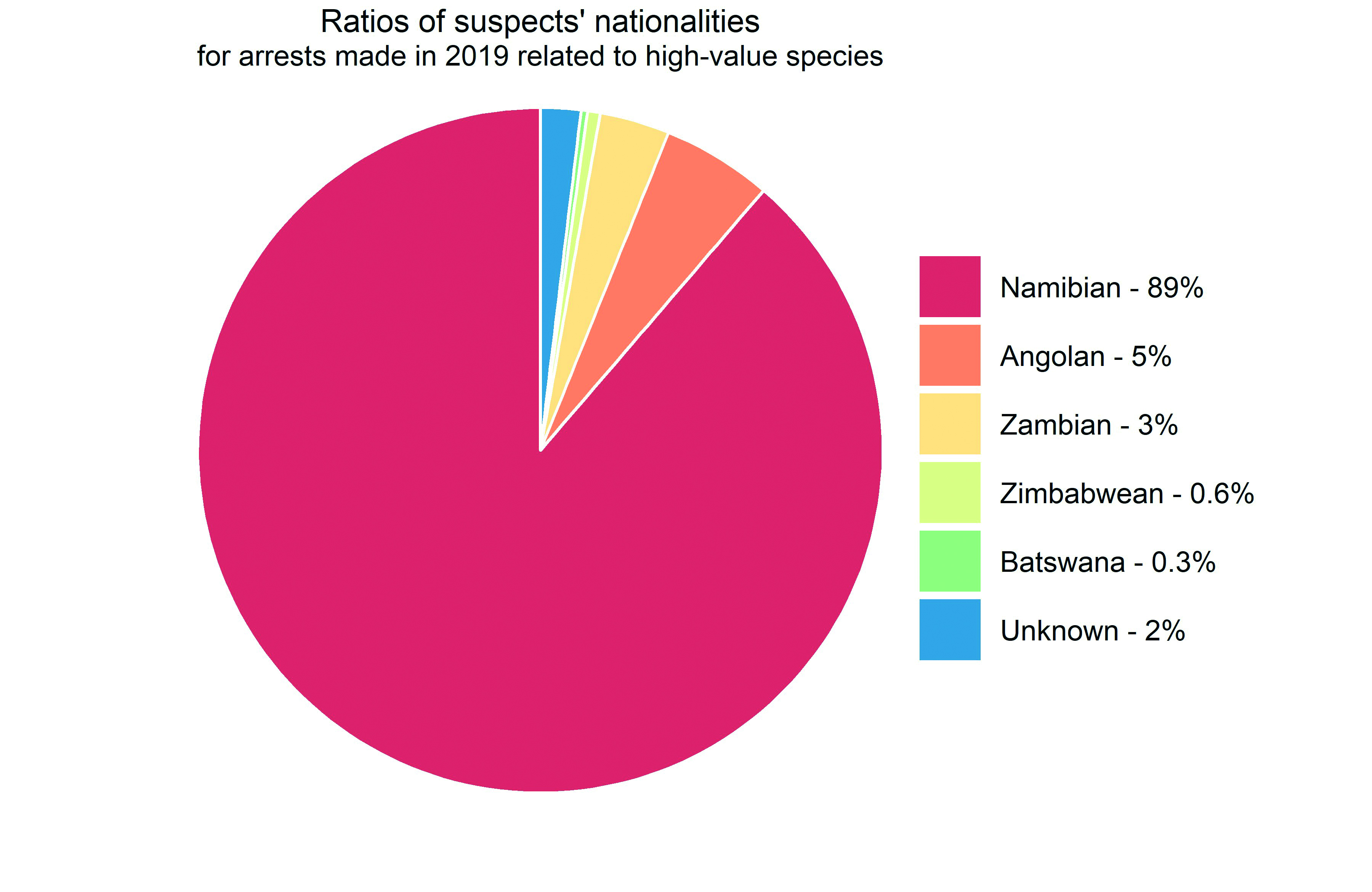
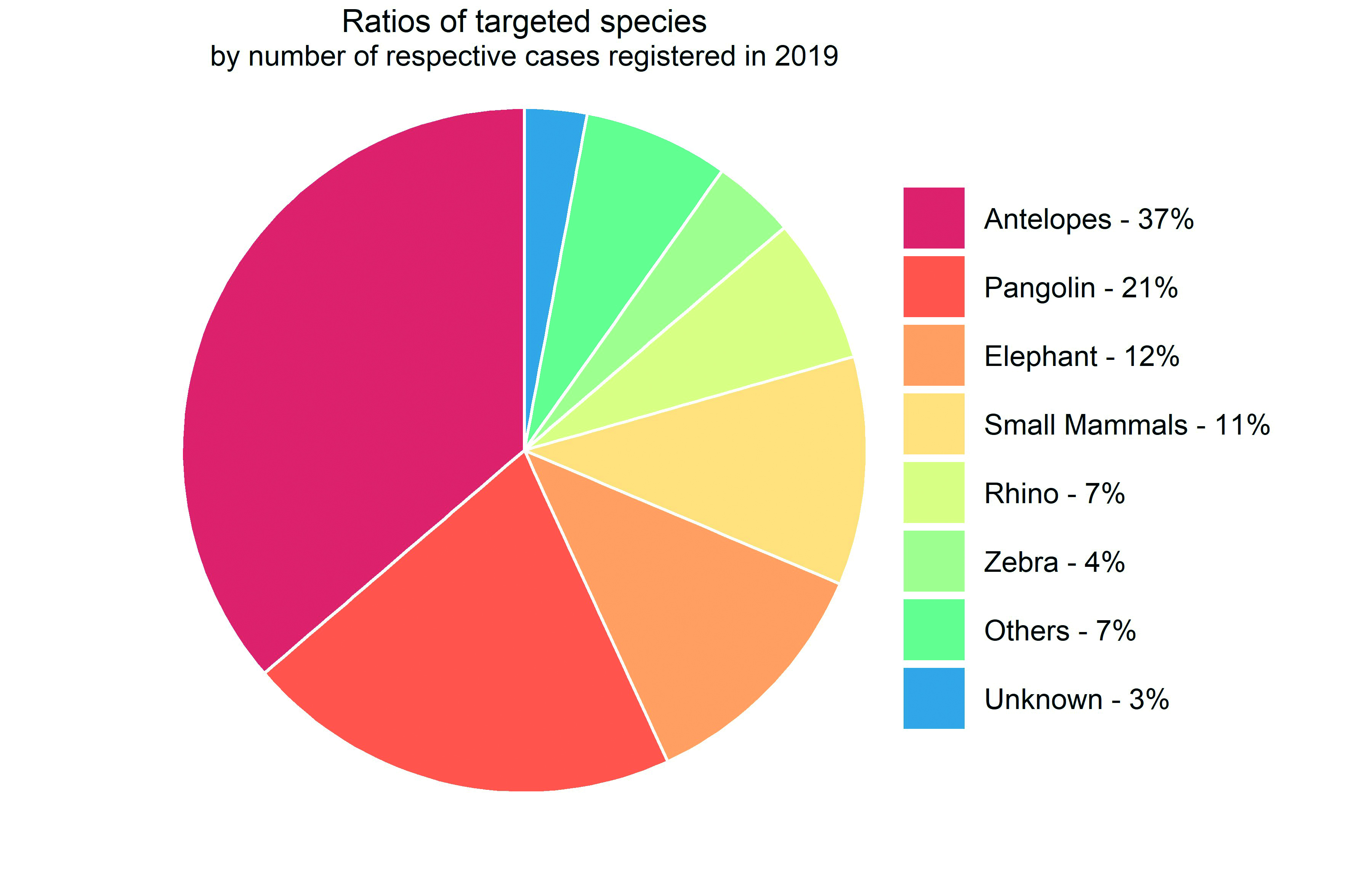
During 2019, 116 elephant tusks were seized, representing at least 58 dead elephants. Yet, based on carcasses found, it appears that only 12 elephants have been poached in Namibia. While some carcasses may not have been discovered, it is unlikely to be as many as 46. This suggests prolific trafficking of ivory through Namibia from other countries. The source can seldom be determined, yet it is clear that a significant percentage comes from neighbouring countries.
An estimated 45 rhinos have been poached in Namibia during 2019. This figure is based on estimated date of death of discovered carcasses. This means that old carcasses are added to the statistics of previous years. Annual poaching estimates for previous years may thus increase as carcasses are discovered. While the number for 2019 is lower than the estimate for 2018 (74 rhinos), it is possible that more carcasses will be found in the coming year that were poached in 2019.
Namibia is employing a great range of initiatives to fight wildlife crime. A strong conservation framework provides the foundation, enabling healthy wildlife populations resilient to drought and disease – and some level of poaching. Namibia’s white rhino population was re-established over the past three decades, after local extinction during the 1800s. There are now viable numbers in state protected areas and on freehold land. The more wary black rhino was only threatened with local extinction in the decades leading up to independence. The population was successfully rebuilt and now occurs in more numbers than it has for over a hundred years. Namibia’s elephants are also at their most numerous in well over a century, having tripled since independence. The state of the pangolin population is still poorly understood, yet the dual impacts of poaching and electric fencing are undoubtedly a big threat.
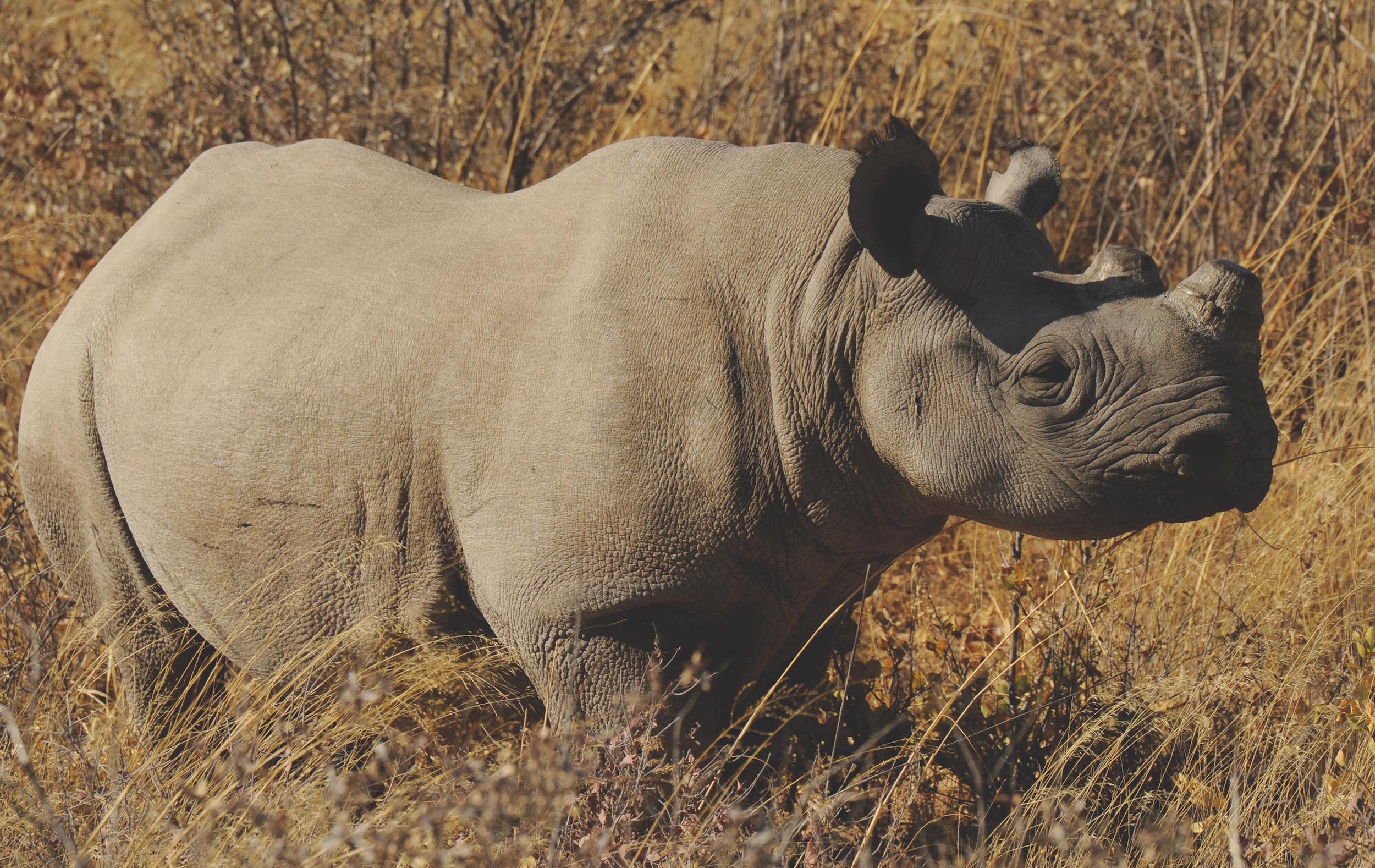
Government has established several new agencies to enable targeted responses to wildlife crime, including the Wildlife Protection Services Division and the Investigation and Intelligence Unit (IIU) of the Ministry of Environment, Forestry and Tourism (MEFT), and the Wildlife Crime Unit within the Office of the Prosecutor-General. MEFT has also developed a dedicated training facility for anti-poaching units and an elite dog unit, specialised in tracking and the detection of weapons and wildlife products.
Anti-poaching initiatives are very important. Increased patrol effort, including dedicated rhino rangers, has shown tremendous results in reducing rhino poaching in the Erongo–Kunene Community Conservation Area, where no rhino has been poached since 2017. Community game guards and broad community support are generally vital components of effective conservation in this area and countrywide.
Law enforcement has recorded increasing successes over the past three years, facilitated by international funding support for field operations. Operation Blue Rhino is a joint initiative between the MEFT IIU and the Protected Resources Division of the Namibian Police Force (NAMPOL), initiated in mid-2018. This has enabled remarkable results, demonstrating the value of political will and a multi-agency approach. With the active support of regional MEFT, NAMPOL and Namibian Defence Force units, the Blue Rhino Task Team has registered well over 550 arrests related to wildlife crime involving high-value species from its inception to the end of February 2020.
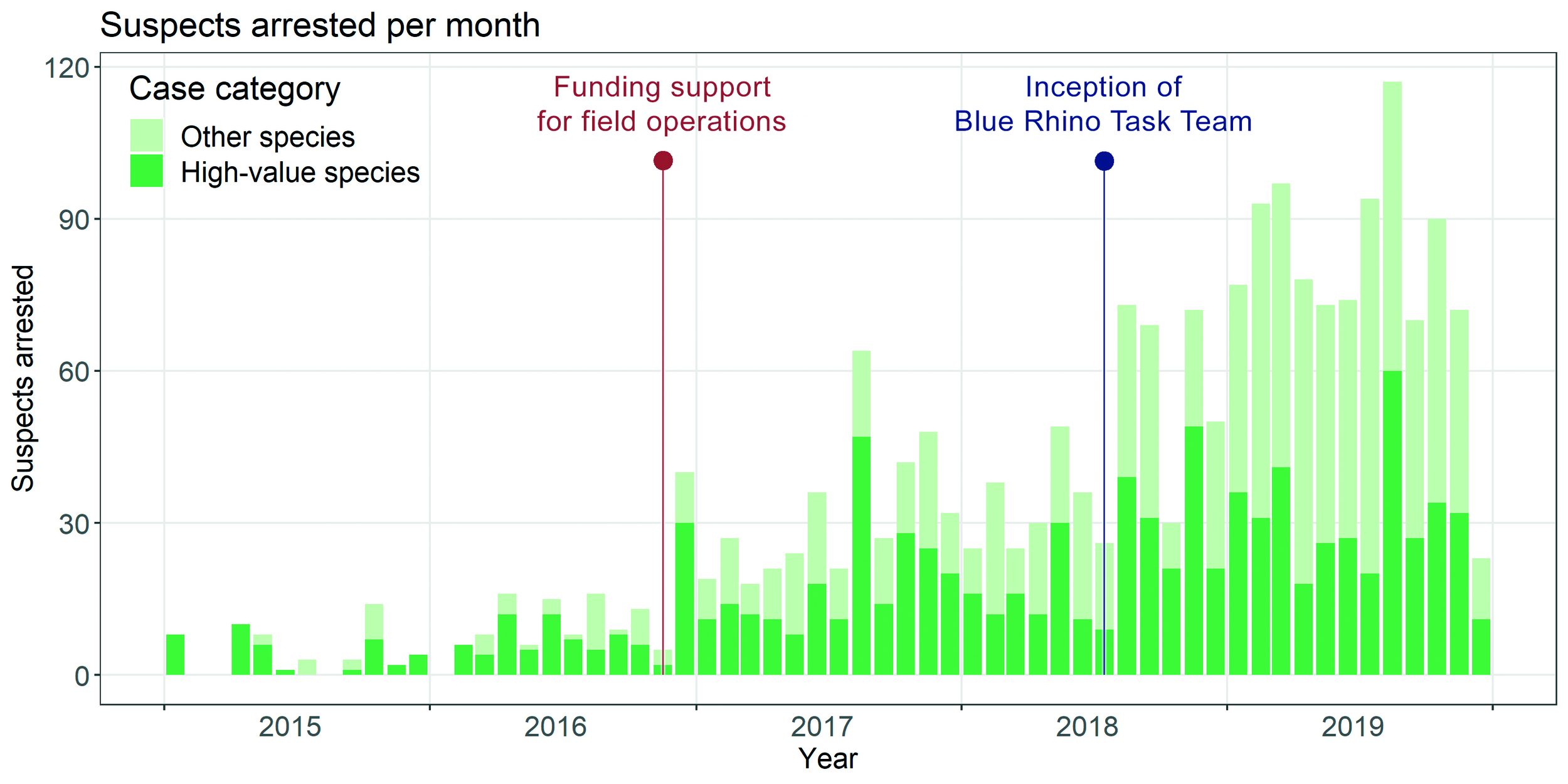
Pre-emptive arrests coordinated by the Blue Rhino Task Team represent perhaps the most significant success. Between the start of August 2018 and the end of February 2020, 125 suspects were arrested on charges of conspiring to poach rhino in 29 different cases. The targeted rhinos were thus saved and the knock-on effect is significant. Through the effective use of intelligence and surveillance technology, major syndicates are being disrupted, particularly through the arrests of an increasing number of high-level dealers and kingpins. International collaboration is enabling the disruption of poaching syndicates that operate across borders.
The Namibian judiciary at times struggles to deal with the huge volume of cases being registered (including high rates of homicide, rape and domestic violence, fraud, theft etc.). Nonetheless, wildlife crime is being treated with seriousness and urgency. A range of legislation is used to charge suspects, including financial crimes and charges under the Prevention of Organised Crimes Act. The past year saw significant sentences – four years in jail for a Botswana national charged with trafficking four elephant tusks; three years for a Namibian in possession of one pangolin skin; 20 years each for four Chinese nationals who were caught in 2014 attempting to smuggle 14 rhino horns out of Namibia.
Partnerships have long been a strength of the Namibian environmental sector and are proving formidable once again. Conservation and law enforcement agencies, the judiciary, non-governmental organisations, international funding organisations, the business community, the public, as well as diverse counterparts in neighbouring countries and further afield, are all pulling together to fight for Namibia’s wildlife.
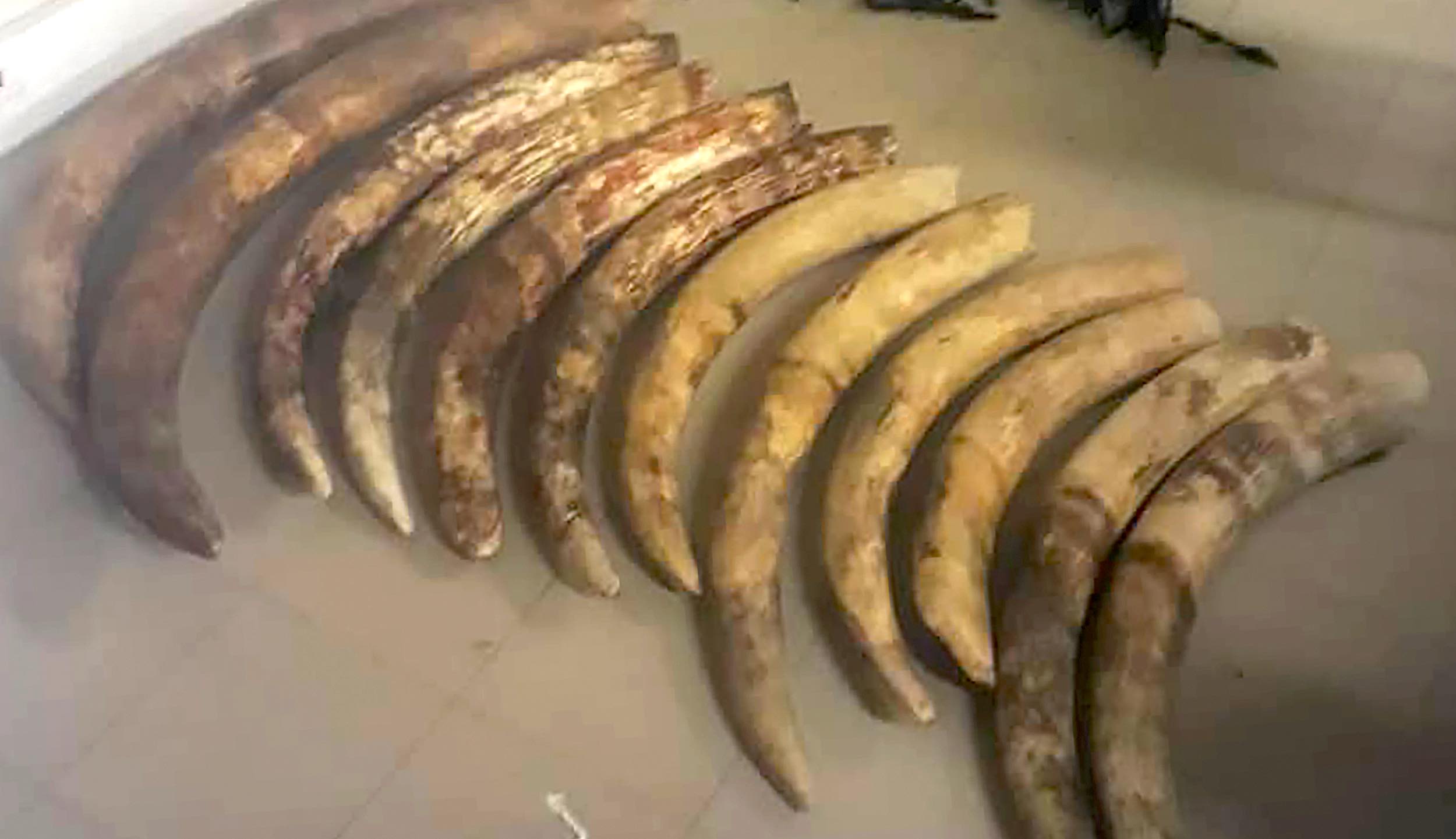
For articles on similar topics, please click one of the following options:
